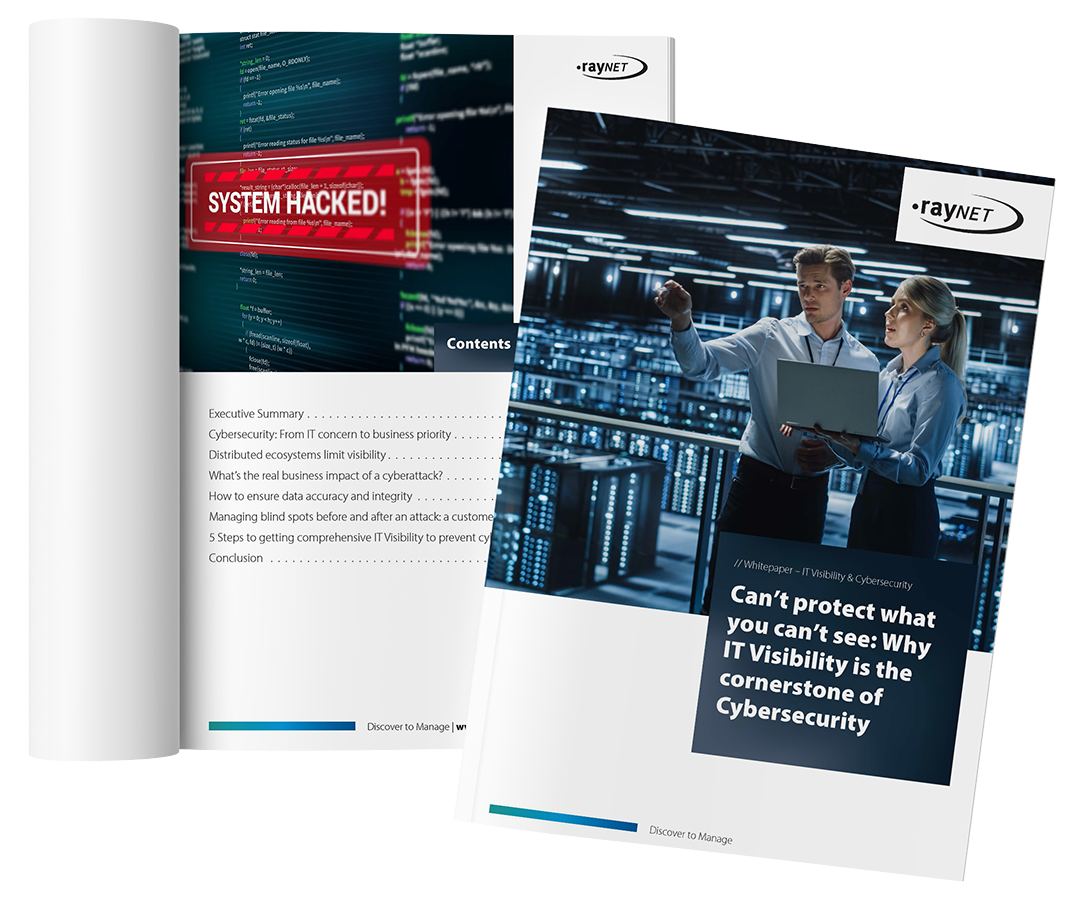Reading time: 4 minutes
Date: June 18th, 2025
An invisible danger lurks in many companies: Shadow IT. The term describes the use of software, hardware or other IT services that are introduced without the knowledge or approval of the IT department. What seems harmless at first glance – an employee quickly sharing a file via their private cloud storage – can have serious consequences.
How shadow IT creeps into the company
Experience has shown that shadow IT can occur in two main ways:
- Use of unauthorized tools: For example, when employees share sensitive company data via platforms such as Google Workspace, even though only Microsoft 365 is officially permitted.
- Unauthorized access to approved systems: For example, accessing company data via a personal account instead of a company account controlled by IT.
- Use of unauthorized software: An employee independently downloads a project management tool or uses a cloud version to organize tasks – without prior approval from the IT department. Internal company information is processed outside the official IT infrastructure, which can cause security risks and data protection problems.
Whether out of convenience or ignorance – both ways open the door to security risks, data loss and cyber attacks.
Despite the obvious dangers, many employees use shadow IT for understandable, albeit dangerous, reasons:
- Ignorance: There is often a lack of awareness and foresight of the risks that arise directly or indirectly from unauthorized tools.
- Better efficiency: Some tools are more user-friendly or more powerful than the officially approved ones. To work more productively or secure a competitive advantage, employees turn to alternatives.
- Simplified collaboration: In order to work better with customers, partners or freelancers, employees often use platforms that are outside the official company IT.
Author:
Related links:
Share blog:
Can't protect what you can't see: Why IT Visibility is the cornerstone of Cybersecurity
IT Visibility is the key to modern cybersecurity, securing data traffic and keeping your data and infrastructure resilient.
In this whitepaper, you will learn how blind spots can jeopardize your infrastructure and how IT Visibility can help you avoid risks in the short and long term:
- Optimize your security strategy
- Discover gaps and blind spots in the security process
- Maintain business flexibility
- Secure your competitive advantage
The underestimated risks of shadow IT
What promises to make work easier in the short term can have catastrophic consequences for companies and organizations in the long term:
- Loss of data control: The IT department often does not know which tools are used or how data is stored or transferred.
- Data theft and security breaches: Shadow IT offers attackers a perfect target. According to a study by IBM (2024), data breaches cost an average of 4.88 million US dollars.
- Violation of data protection laws: Companies that have to comply with regulations such as the GDPR are exposed to high fines for uncontrolled data use.
The danger of shadow IT lies in its lack of visibility: you can only protect what you know.
How can companies protect themselves
Fortunately, there are effective measures to recognize and contain shadow IT:
- Implementation of discovery solutions: A powerful discovery solution can help identify and monitor all systems and services currently in use, both authorized and unauthorized. IT teams can then create policies to allow, restrict or block the use of these tools as required.
- Use of a Cloud Access Security Broker (CASB): This solution offers comprehensive protection mechanisms for cloud services, including access control and data loss prevention (DLP).
- Training for employees: Education about the dangers of shadow IT is essential. Employees should understand the risks associated with private email addresses, unauthorized apps or their own hardware.
- Open communication and a “no blame” culture: Employees should be allowed to communicate their actual work needs without fear of sanctions. Problems often arise simply because no official solution is offered.
Restriction of administrator rights: Elimination of administrator rights to minimize the installation of unauthorized software and the risk of security vulnerabilities
The role of a shadow IT policy
A clear and well thought-out shadow IT policy forms the backbone of prevention. It defines the rules for introducing new solutions and technologies and helps to identify and control risks at an early stage. Nevertheless, a survey of 1,000 IT experts by Entrust shows that 37% of companies have not defined clear consequences for the use of shadow IT – an irresponsible risk in an increasingly digitalized world.
Five takeaways on shadow IT
1. Shadow IT is a business risk and not just an IT problem
Unapproved solutions jeopardize data security, compliance and corporate reputation – often without the knowledge of IT.
2. Complete transparency is the first step towards control
Only those who know their entire IT landscape, including shadow IT, can effectively manage and eliminate risks.
3. Employees rarely act maliciously, but often carelessly
Lack of awareness and limited options when selecting approved solutions often lead to the use of insecure and unauthorized alternatives.
4. Technology alone is not enough
IT Asset Discovery solutions or CASB tools must be combined with training and an open corporate culture.
5. No clear protection without guidelines
A company-wide shadow IT policy with clear consequences is essential – and according to recent studies, more than a third of companies lack such a policy.
Conclusion
Shadow IT is more than just a minor problem – it is a potential flashpoint for security breaches, data loss and legal consequences. Companies that do not actively deal with it not only risk losing millions, but also their good reputation. It’s high time to shed some light – before it’s too late.
Try Raynet One free for 30 days and get complete transparency of your IT landscape, including shadow IT, within minutes.
Author:

SVP Technology & Information Managing Director
Related links:
Share this blog post:


